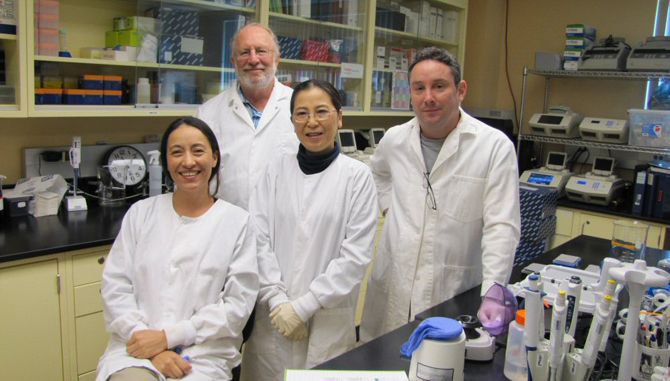 An exciting new finding on cycads! A new paper in the journal Annals of Botany resolves long-standing questions on how extant cycads are related.
An exciting new finding on cycads! A new paper in the journal Annals of Botany resolves long-standing questions on how extant cycads are related.
 The study, led by Dayana Salas-Leiva, postdoctoral researcher at FIU, and Alan Meerow of the USDA (pictured here at Chapman Field with Kyoko Nakamura and MBC’s Michael Calonje), used new techniques to determine the positions of Dioon, Bowenia and Stangeria relative to other cycads.
The study, led by Dayana Salas-Leiva, postdoctoral researcher at FIU, and Alan Meerow of the USDA (pictured here at Chapman Field with Kyoko Nakamura and MBC’s Michael Calonje), used new techniques to determine the positions of Dioon, Bowenia and Stangeria relative to other cycads.
The new phylogeny corroborates the newly discovered “young ages” for the extant species (see August 8 story, below), but also demonstrates a deeper phylogenetic position for Dioon than previously thought. The study used single-copy nuclear genes, which brought a greater degree of support for these relationships than any previous data or method.
One of the most interesting results is that Stangeria, Microcycas and Zamia are close relatives, arising after the age of dinosaurs. This finding is surprising, but makes sense in the context of some known fossils, including Eostangeria, which has aspects in common with both Stangeria and Zamia.
The work, which used plants from the MBC collection, brought together a team from the USDA, the New York Botanical Garden, Florida International University, Fairchild Tropical Botanic Garden, Rancho Santa Ana Botanic Garden, and Montgomery Botanical Center. The work was generously funded by the National Science Foundation, and a Christiane Tyson Research Fellowship. Plant research is a big part of the Montgomery mission, and this paper shows how the plant collection and the team work to move research forward.
